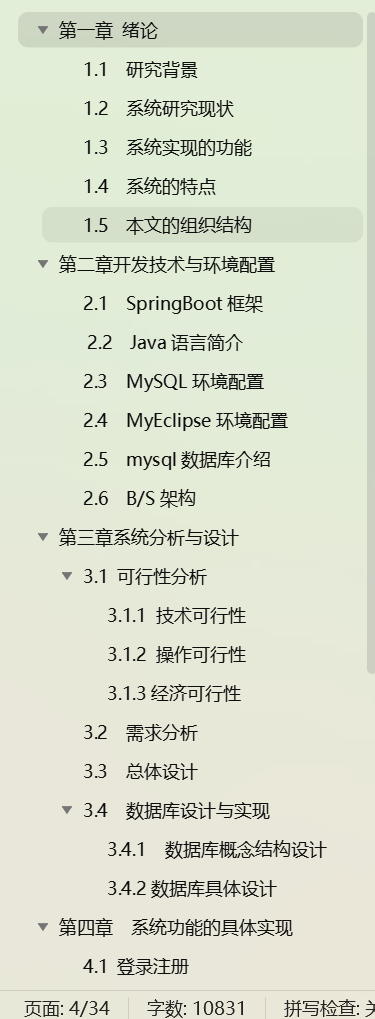已完成实验
已完成实验链接
简介
实验 21. 实现 printf
总结
-
简化系统调用和中断,用 eax 代表调用号参数,ebx,ecx,edx 来代表参数(syscall.c kernel.s)
-
添加 write 的系统调用接口(syscall.c, syscall-init.c, print.s)
注意:要更改 print.s 中清屏的地址 -
添加 printf 函数接口

主要代码
syscall.h

syscall.c
// 文件: syscall.c
// 时间: 2024-08-01
// 来自: ccj
// 描述: 用户系统调用,把调用号和参数写入寄存器,执行int 0x80,从eax拿到返回值
#include "syscall.h"
/// 系统调用,进入0x80之前
// 1. 把调用号和参数写入寄存器
// eax = NUMBER;
// ebx = ARG1;
// ecx = ARG2;
// edx = ARG3;
// 2. int 0x80
// 3. retval = eax
#define _syscall0(NUMBER) \
({ \
int retval; \
asm volatile("int $0x80" : "=a"(retval) : "a"(NUMBER) : "memory"); \
retval; \
})
#define _syscall1(NUMBER, ARG1) \
({ \
int retval; \
asm volatile("int $0x80" : "=a"(retval) : "a"(NUMBER), "b"(ARG1) : "memory"); \
retval; \
})
#define _syscall2(NUMBER, ARG1, ARG2) \
({ \
int retval; \
asm volatile("int $0x80" : "=a"(retval) : "a"(NUMBER), "b"(ARG1), "c"(ARG2) : "memory"); \
retval; \
})
#define _syscall3(NUMBER, ARG1, ARG2, ARG3) \
({ \
int retval; \
asm volatile("int $0x80" \
: "=a"(retval) \
: "a"(NUMBER), "b"(ARG1), "c"(ARG2), "d"(ARG3) \
: "memory"); \
retval; \
})
/// @brief 返回当前任务pid
/// @return
uint32_t getpid() { return _syscall0(SYS_GETPID); }
/// @brief 写入字符串
/// @param fd
/// @param buf 字符串
/// @param count 字符数量
/// @return
uint32_t write(char* str) { return _syscall1(SYS_WRITE, str); }
kernel.s

syscall-init.c

print.s

stdio.c
// 文件: stdio.c
// 时间: 2024-08-01
// 来自: ccj
// 描述: printf,%符号转义
#include "stdio.h"
#include "interrupt.h"
#include "global.h"
#include "string.h"
#include "syscall.h"
#include "print.h"
#define va_start(ap, v) ap = (va_list)(&v)
// v是字符串首地址
// &v就是字符串首地址的内存地址,也就是栈顶
// ap指向了栈顶
#define va_arg(ap, t) *((t*)(ap += 4)) // ap指向下一个参数并返回其值
// t是 type 类型
#define va_end(ap) ap = NULL // 清除ap
/* 将整型转换成字符(integer to ascii) */
static void itoa(uint32_t value, char** buf_ptr_addr, uint8_t base) {
uint32_t m = value % base; // 求模,最先掉下来的是最低位
uint32_t i = value / base; // 取整
if (i) { // 如果倍数不为0则递归调用。
itoa(i, buf_ptr_addr, base);
}
if (m < 10) { // 如果余数是0~9
*((*buf_ptr_addr)++) = m + '0'; // 将数字0~9转换为字符'0'~'9'
} else { // 否则余数是A~F
*((*buf_ptr_addr)++) = m - 10 + 'A'; // 将数字A~F转换为字符'A'~'F'
}
}
/* 将参数ap按照格式format输出到字符串str,并返回替换后str长度 */
uint32_t vsprintf(char* str, const char* format, va_list ap) {
char* buf_ptr = str;
const char* index_ptr = format;
char index_char = *index_ptr; // 格式字符串中的字符
int32_t arg_int;
char* arg_str;
while (index_char) {
if (index_char != '%') { // 如果不是%,那么直接复制到str
*(buf_ptr++) = index_char;
index_char = *(++index_ptr);
continue;
}
index_char = *(++index_ptr); // index_char是&,那么得到%后面的字符做转换
switch (index_char) {
case 's': // %s处理
arg_str = va_arg(ap, char*); // 拿到字符串首地址
strcpy(buf_ptr, arg_str); // 复制到str
buf_ptr += strlen(arg_str); // str指针增加
index_char = *(++index_ptr); // 拿到%之后的字符继续循环
break;
case 'c':
*(buf_ptr++) = va_arg(ap, char);
index_char = *(++index_ptr);
break;
case 'd':
arg_int = va_arg(ap, int);
/* 若是负数, 将其转为正数后,再正数前面输出个负号'-'. */
if (arg_int < 0) {
arg_int = 0 - arg_int;
*buf_ptr++ = '-';
}
itoa(arg_int, &buf_ptr, 10);
index_char = *(++index_ptr);
break;
case 'x':
arg_int = va_arg(ap, int);
itoa(arg_int, &buf_ptr, 16);
index_char = *(++index_ptr); // 跳过格式字符并更新index_char
break;
}
}
return strlen(str);
}
/* 同printf不同的地方就是字符串不是写到终端,而是写到buf中 */
uint32_t sprintf(char* buf, const char* format, ...) {
va_list args;
uint32_t retval;
va_start(args, format);
retval = vsprintf(buf, format, args);
va_end(args);
return retval;
}
/* 格式化输出字符串format */
uint32_t printf(const char* format, ...) {
va_list args;
char buf[1024] = {0}; // 用于存储拼接后的字符串
va_start(args, format); // 使args指向format
vsprintf(buf, format, args);
va_end(args);
return write(buf);
}
main.c
// 文件: main.c
// 时间: 2024-07-19
// 来自: ccj
// 描述: 内核从此处开始
#include "print.h"
#include "init.h"
#include "thread.h"
#include "interrupt.h"
#include "console.h"
#include "process.h"
#include "syscall.h"
#include "syscall-init.h"
#include "stdio.h"
// 两个内核线程
void k_thread_a(void*);
void k_thread_b(void*);
// 两个用户进程
void u_prog_a(void);
void u_prog_b(void);
int main(void) {
put_str("I am kernel\n");
init_all();
process_execute(u_prog_a, "user_prog_a");
process_execute(u_prog_b, "user_prog_b");
console_put_str("main_pid:0x");
console_put_int(sys_getpid());
console_put_char('\n');
thread_start("k_thread_a", 31, k_thread_a, "argA ");
thread_start("k_thread_b", 31, k_thread_b, "argB ");
intr_enable(); // 打开中断,使时钟中断起作用
while (1) {};
return 0;
}
// 内核线程函数
void k_thread_a(void* arg) {
console_put_str("thread_a_pid:0x");
console_put_int(sys_getpid());
console_put_char('\n');
while (1) {}
}
void k_thread_b(void* arg) {
console_put_str("thread_b_pid:0x");
console_put_int(sys_getpid());
console_put_char('\n');
while (1) {}
}
// 测试用户进程
void u_prog_a(void) {
printf("u_%s_pid:0x%d%c", "prog_a", getpid(), '\n');
while (1) {}
}
void u_prog_b(void) {
printf("u_%s_pid:0x%d%c", "prog_b", getpid(), '\n');
while (1) {}
}




















